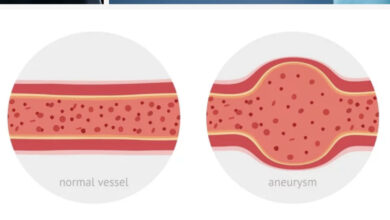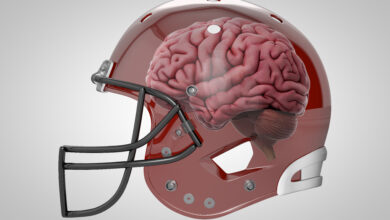BRAIN DEAD: WHAT DOES IT MEAN?

Family physicians are occasionally called upon to “pronounce” a patient. The use of the term “pronounce” in this regard refers not to saying their name correctly, but to the act of determining if they have died. It’s not every day, or even every week, that it happens, but in certain circumstances the family doctor will be asked to make this pronouncement. In many hospitals the terminology used is “RHC”—Respirations Have Ceased. Mrs. Jones “RHC’d” at 10:15 pm.
It’s a very different situation, however, if the patient is still on a life support device such as a ventilator? What happens then? His/her “respiration’s have not ceased.” He/she is still breathing. The heart is still beating. Is that patient dead or alive? How do you know when to withdraw the ventilator? When is a patient truly dead?
This dilemma led to a lot of discussion and resulted in the term BRAIN DEAD or BRAIN DEATH. In the past, if a person was severely ill and was found to have a “flat EEG,” ie. no electrical activity in the brain, they were declared Brain Dead. But today, there is much more to this decision, and it can be reached without the use of an EEG.
Because intensive care units and their professional personnel are so good at keeping people alive, two classifications of death have evolved—BIOLOGICAL DEATH and BRAIN DEATH.
BIOLOGICAL DEATH is the absence any reversible activity of the heart or lungs. The heart
has stopped beating and “respirations have ceased.”
BRAIN DEATH is the irreversible loss of all functions of the brain, including the brain stem.
For a patient to be declared truly dead, both biological and brain death determinations are in play and three circumstances must exist. All three must be present and documented to be declared truly dead.
1. COMA—a “state of profound unresponsiveness” as a result of “severe illness or brain
injury.” Patients can’t open their eyes, speak, or exhibit purposeful behaviors.
2. ABSENCE OF BRAIN STEM REFLEXES—absent pupillary reflexes, corneal and
gag reflexes, heart or respiratory stimuli, eye movements, or response to pain.
3. APNEA—inability to breathe without mechanical assistance, and the cessation of
breathing activity when assistance is removed.
“A person who is BRAIN DEAD is legally and clinically dead,” in spite of persistent biological life.
“The diagnosis of Brain Death is primarily clinical,” meaning it is determined by three major criteria which can be substantiated, if necessary. More often than not, confirmatory testing, such as an EEG, is not necessary to verify Brain Death, and the findings listed below are enough to make the determination.
The three major criteria/factors/procedures for Brain Death Certification are:
1. The “identification of the proximate cause” of the brain damage and irreversible coma.
History and physical findings determine a clear cause for brain dysfunction. Other
confounding factors must be excluded (shock, drugs, infection, etc.)
2. A complete neurological exam confirming absence of brain activity and brain stem
reflexes. A repeat, confirmatory, exam is conducted 6 hours after the first exam to be
certain absence of brain activity was accurately determined and persists.
3. An APNEA TEST. The patient is disconnected from the ventilator to determine if
breathing stops, oxygen levels drop, and blood pressure lowers. If it does, the test is
positive, and factors in to declaring death.
Brain Death is present when overwhelming brain damage has occurred, neurologic and brain stem function are absent, and the patient cannot breathe unassisted. As said before, Brain Death is a clinical diagnosis (made by thorough examination findings). A “flat EEG” alone is not the method used to determine brain death. The three clinical criteria listed above are what’s necessary. If uncertainty or disagreement are still an issue, multiple ancillary studies can be done for confirmation. Brain CT angiography (angiogram), nuclear angiography, EEG, cranial Doppler, and MRI angiography are all confirmatory tests. These studies are usually unnecessary, but often family members will request one for certainty and reassurance.
This whole discussion arose from an opinion essay in the June 2, 2020 issue of the Journal of the American Medical Association (JAMA). In it, the authors mentioned the 1981 Uniform Determination of Death Act that defined brain death as “the irreversible cessation of all functions of the entire brain.” The authors were proposing a revision of the law to “better align itself with current medical practice.” “Death entails the irreversible loss of those essential characteristics which are necessary to the existence of a living human person and, thus, the definition of death should be regarded as the irreversible loss of the capacity for consciousness, combined with the irreversible loss of the capacity to breathe.” If you’re in a coma and can’t breathe on your own, you may be brain dead. Many patients can be “kept alive” by mechanical assistance and exhibit biological activity, but they “have no moral relevance.” In the UK, “Brain Death is considered to be a moral determination that is distinct from biological death, based on what constitutes the essential characteristics of a human person.”
“When functions such as breathing and nutrition are medically supported, the brain is not essential for maintaining biological integration and function.” The patient is still biologically alive. If Brain Death has been determined by the three listed criteria, biological death will ensue when nutrition and mechanical ventilation are withdrawn. Harvesting of organs for transplantation occurs in the period between brain death and biological death. Biological death always follows organ harvesting. Thus, it is imperative that brain death be determined accurately before organ removal begins.
Brain Death is the true expression of the end of life. Being “kept alive” by a ventilator and feeding tube is biological life, but artificially sustained. Once “an irreversible loss of the capacity for consciousness, combined with the irreversible loss of the capacity to breathe” occurs, the definition of death has been attained. Once the brain dies, the body will die when life support is discontinued.
So when the doctor is asked to “pronounce” a patient, a lot goes into being sure the pronouncement is correct.
References: Truog RD, Paquette ET, Tasker RC. Understanding Brain Death. JAMA 2020 June 2;323(21):2139-2140.
https://www.ncbi.nim.nih.gov/articles/PMC2772257
https://www.aopo.org/state-brain-death-laws.
https://www.law.upenn.edu/Bill/archives/ulc/fnact99/1980s/udda80.htm
https://www.hopkinsmedicine.org/news/articles/the-challenges-of-defining-and-diagnosing -Brain-death.
https://www.surgery.med.miami.edu/laora/clinical-operations/brain-death-diagnosis.




